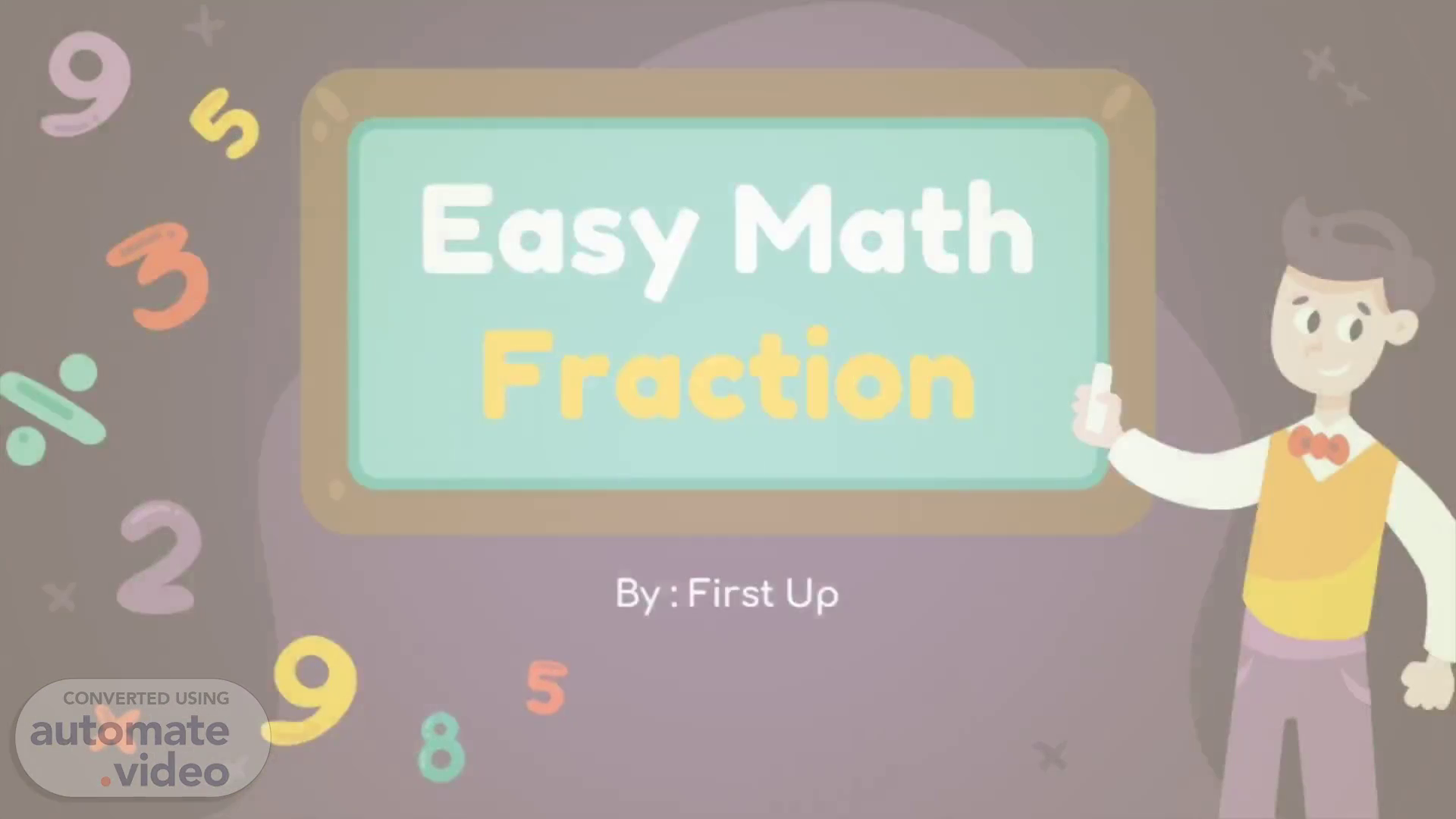Scene 1 (0s)
[Audio] Hello everyone. Welcome to this easy math lesson. To year 4 pupils, this video is for you. In this video, we will learn about fractions..
Scene 2 (14s)
[Audio] In math, a fraction is used to represent a portion or part of the whole thing. Basically, a fraction has two parts: the numerator and the denominator. In order to recognize it better, the number at the top will always be the numerator, and the number at the bottom will always be the denominator. Now, let's see example A. Assume that the areas colored are taken. Based on example A, the total area has been colored as 3, and the total area is 4. So the fraction will be 3 over 4. The same goes for examples B, C, and D..
Scene 3 (56s)
[Audio] Proper fraction is where the numerator smaller than denominator. We can see three over five as an example. Three smaller than five, then it's a proper fraction. The key words here is number at the top smaller than number at the bottom..
Scene 4 (1m 15s)
[Audio] An improper fraction is one where the numerator is greater than the denominator. See the fraction of five over two. If five is bigger than two, then it's an improper fraction. The key words here are that the number at the top is bigger than the number at the bottom..
Scene 5 (1m 35s)
[Audio] A mixed fraction is a combination of a natural number and a fraction. Let's see the mixed fraction one, two over five. One is determined as a natural number, and two over five is a fraction..
Scene 6 (1m 51s)
[Audio] How to convert a mixed fraction into an improper fraction. We need to multiply the denominator by a natural number and add the numerator. Then, it will be 3x1+2 over 3. After solving the multiplication operation 3x1, we will get 3 plus 2 over 3. After solving the additional operation, we will get 5 over 3..
Scene 7 (2m 19s)
[Audio] Now, we learn how to convert an improper fraction into mixed fraction. Method 1, 4 over 3. We know that 3+1=4, so we can separate the new fraction into 3 over 3 plus 1 over 3. We also know that if 3 over 3 equals 1, then we will get 1 plus 1 over 3. So, the answer will be 1, 1 over 3. Another solution can be found in Methods 2 and 3..
Scene 8 (2m 52s)
[Audio] We have come into additional and substraction operations in fraction. Here are the rules that we need to digest. For the 1st rule, the denominator is the same. See the example of 2 over 7 plus 3 over 7. Method 1: Both get the same denominators. As mentioned earlier, the same denominator can directly add a numerator's number. Then we will get 2 plus 3 over 7. The answer will be 5 over 7. You can refer to Method 2 as another way of solving the problem..
Scene 9 (3m 34s)
[Audio] The denominators in Rules 2 are not the same. But the lowest denominator can get the same value as the highest denominator by multiplying some number. See the example 3, 2 over 5, plus 3 over 10. 5 is the lowest denominator, and 5 can get the same value as 10 by multiplying 2. So, 2 times 2 over 5 times 2. In this situation, we only change one part of the fraction. After multiplying, we will get 4 over 10 plus 3 over 10. Then, we can add 4 plus 3 over 7. Final answer: 7 over 10..
Scene 10 (4m 21s)
[Audio] The denominators in Rules 3 are not the same, and the lowest denominator cannot get the same value as the highest denominator even by multiplying some number. In this case, we need to change both denominators by multiplying each other. Look at example 4, 3 over 5, plus 1 over 7. Denominator 5 cannot get the same value as denominator 7. So, we need to do 5 times 7, 7 times 5. Then, 3 times 7, since 5 needs to times 7, plus 1 times 5, since 7 needs to times 5. After multiplying, we will get 21 over 35 plus 5 over 35. Just add 21 plus 5 equals 26 over 35. That's easy, right? Now, I'm sure all of you can solve the fraction problem, am I right?.
Scene 11 (5m 22s)
Let's do some exercise. 1. Based on shape below, complete the fraction 2. Change the improper fraction into mixed fraction 3. Change the mixed fraction into improper fraction 4. Solve the following fraction.
